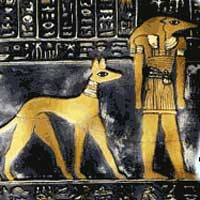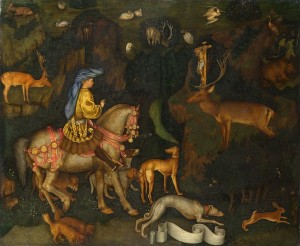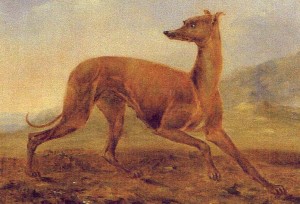Greyhounds have an extensive and prestigious past that you may not be aware of. Here are some historical findings we’ve come across that might surprise you!
1) Greyhounds originated in England during the Medieval era
FALSE
Greyhounds are an Ancient Egyptian breed. They have been traced as far back as 3000 B.C.
2) Greyhounds get their name because they were originally only grey (blue) in colour
FALSE.
The accepted explanation is one of those speculative answers. The name began as Grighund; ‘hund’ being the Old English antecedent to ‘hound’ – but the ‘grig’ is a mystery. It certainly bears no relation to the colour grey; only that it was a word related somehow to dogs in Old Norse. According to linguist Julius Pokorny –obviously a fan – the name means ‘fair dog’, based on several derivations of ‘grig’ from languages as far removed as Old Irish, German, Icelandic and Slavonic.
3) Greyhounds were worshiped in Ancient Egypt
TRUE.
The death of a favourite greyhound was treated the same as the death of a human. Families shaved heads, stopped eating, wailed, mummified and buried their pets with their owners.

4) At one point in history, greyhounds almost became extinct
TRUE.
During times of famine in the Middle Ages, greyhounds very nearly became extinct. They were saved by clergymen who protected them and bred them for the nobility. From this point on, they came to be considered the dogs of the aristocracy.
5) The first literary mention of any canine breed was in Homer’s “The Odyssey”
TRUE.
‘The Odyssey’, which dates back to the late 8th century BCE, told the story of Odysseus returning home from the fall of Troy to find the first to recognise him was his greyhound ‘Argos’, who was only a puppy when he left home. Given that fact that Odysseus was presumed dead by the humans, it is poignant that only the dog recognised him…
Although the breed is not expressly named, scholars of the work have reasoned, from references to hunting, Argos was a loyal greyhound.

“Gray-Hound” – woodcut (1658)
6) No breed of dog is ever mentioned in the Bible
FALSE.
In fact, Greyhounds are the only breed mentioned.
King James Versions (KJV) Proverbs 30:29-31
There be three things which do well, yea,
Which are comely in going;
A lion, which is strongest among beasts and
Turneth not away from any;
A greyhound;
And a he goat also; and a king, against whom there is no rising up
7) Greyhounds are mentioned in Geoffrey Chaucer’s ‘Canterbury Tales’ (c1389)
TRUE.
They are mentioned in the following excerpt where the Monk spent great sums on his greyhounds:
‘…greyhounds he hadde as swifte as fowel in flight;
Of prikyng and of huntyng for the hare
Was al his lust, for no cost wolde he spare…’
8) Greyhounds figure prominently in the works of Renaissance artists
TRUE.
As classical subjects became popular and the wealthy aspired to being portrayed with the dogs of royalty.
Pisanello, The Vision of Saint Eustace, c. 1455
9) Greyhounds are not the fastest dog
FALSE.
Greyhounds are indeed the fastest breed of dog. They can reach speeds in excess of 70 KPH for short distances.
10) Greyhounds can see what is behind them
TRUE.
Because they, like other sight hounds, have thin heads with widely spread eyes this gives the dogs 270-degree vision meaning they can see some of what is behind them.
11) Greyhounds only arrived in Australia in the late 1890’s
FALSE.
In 1770 when Captain Cook and his crew of 85 people arrived in Botany Bay Australia the botanist Joseph Banks, had a pair of Greyhounds with him.
Kangaroo Dog owned by Mr Dann, Castlereagh St, Sydney 1853. Collection Mitchell Library, Sydney





